
How to Use Wifi module ESP8266-01: Examples, Pinouts, and Specs
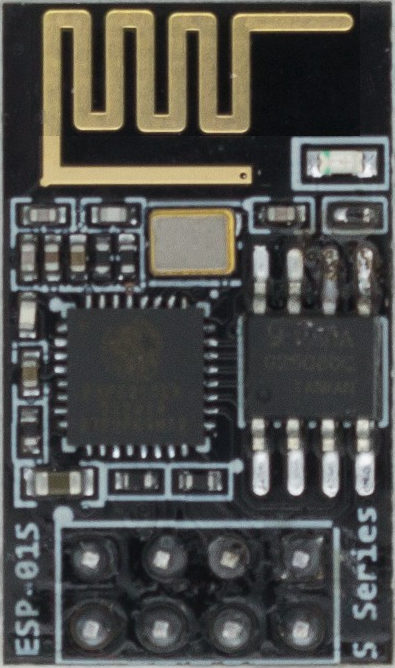
 Design with Wifi module ESP8266-01 in Cirkit Designer
Design with Wifi module ESP8266-01 in Cirkit DesignerIntroduction
The ESP8266-01 is a highly integrated Wi-Fi module that offers a complete and self-contained networking solution, allowing it to either host an application or offload all Wi-Fi networking functions from another application processor. Manufactured by AZDelivery, the ESP8266-01 is based on the ESP8266 chip and is widely used in Internet of Things (IoT) applications due to its compact size, low cost, and robust feature set.
Explore Projects Built with Wifi module ESP8266-01
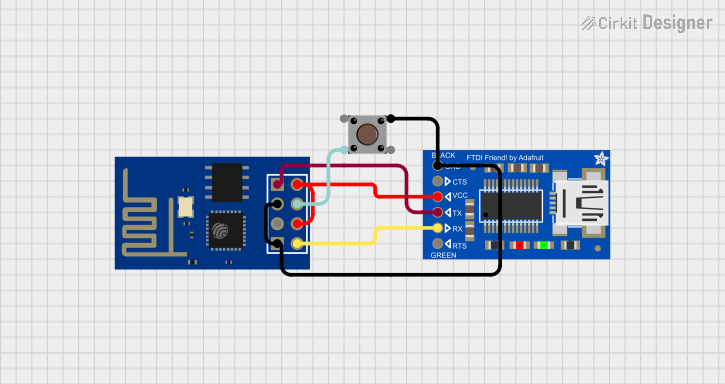
 Open Project in Cirkit Designer
Open Project in Cirkit Designer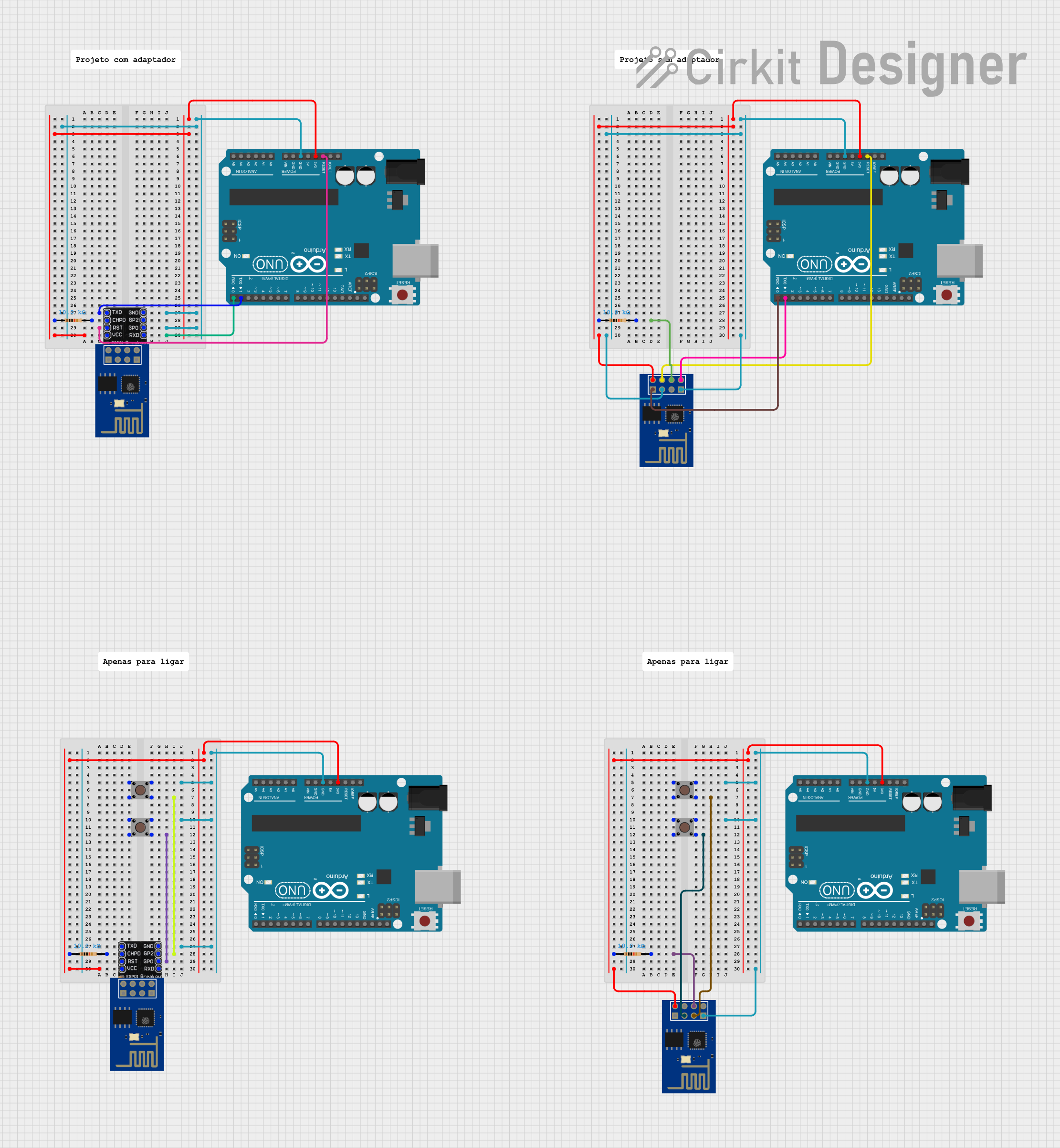
 Open Project in Cirkit Designer
Open Project in Cirkit Designer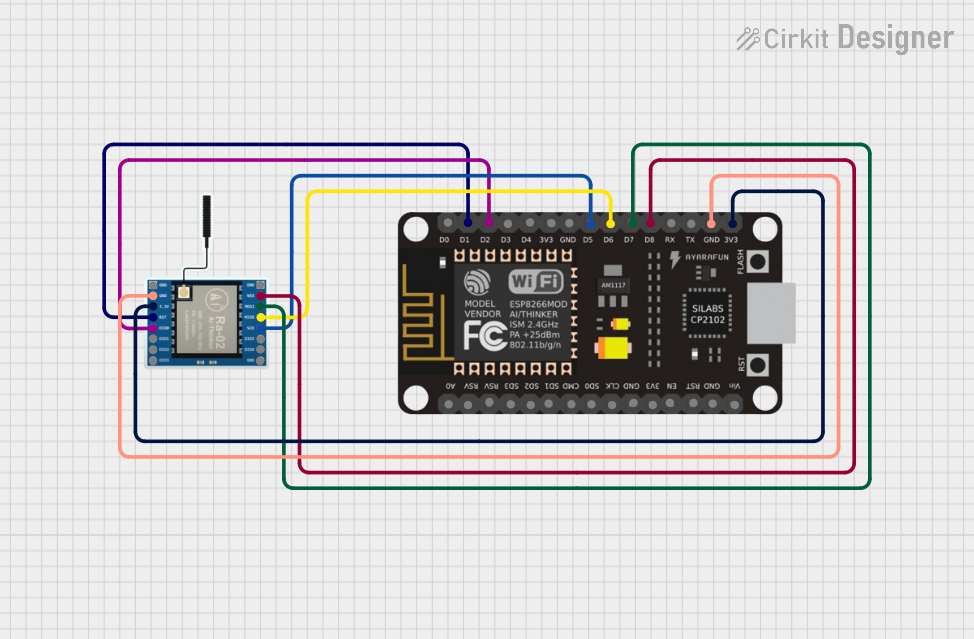
 Open Project in Cirkit Designer
Open Project in Cirkit Designer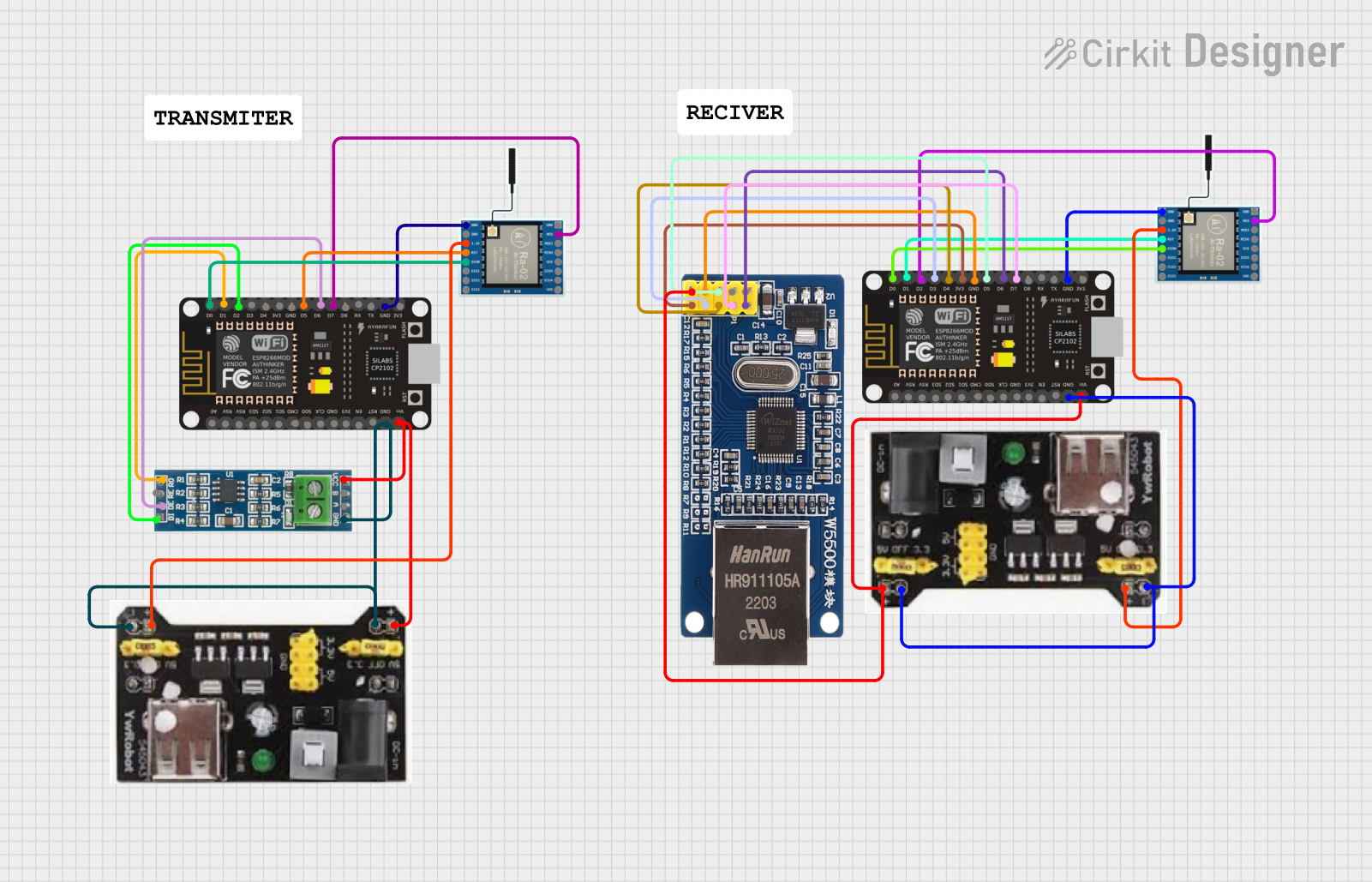
 Open Project in Cirkit Designer
Open Project in Cirkit DesignerExplore Projects Built with Wifi module ESP8266-01

 Open Project in Cirkit Designer
Open Project in Cirkit Designer
 Open Project in Cirkit Designer
Open Project in Cirkit Designer
 Open Project in Cirkit Designer
Open Project in Cirkit Designer
 Open Project in Cirkit Designer
Open Project in Cirkit DesignerCommon Applications and Use Cases
- Smart home devices
- Wi-Fi enabled sensors
- Wireless data logging
- Remote control systems
- IoT prototypes and projects
Technical Specifications
Key Technical Details
- Operating Voltage: 3.0V to 3.6V
- Recommended Operating Voltage: 3.3V
- Operating Current: Average ~80mA
- Wireless Standard: 802.11 b/g/n
- Frequency Range: 2.4 GHz - 2.5 GHz (2400M - 2483.5M)
- Serial/UART baud rate: 115200 bps (default, can be changed)
- Flash Memory: 1MB
Pin Configuration and Descriptions
| Pin Number | Name | Description |
|---|---|---|
| 1 | GND | Ground |
| 2 | GPIO2 | General Purpose Input/Output 2 |
| 3 | GPIO0 | General Purpose Input/Output 0 |
| 4 | RX | UART Receive Pin |
| 5 | TX | UART Transmit Pin |
| 6 | CH_PD | Chip Power-down Pin. Active high. |
| 7 | RST | Reset Pin. Active low. |
| 8 | VCC | Power Supply (3.3V) |
Usage Instructions
How to Use the Component in a Circuit
- Connect VCC to a stable 3.3V power supply.
- Connect GND to the ground of the power supply.
- Connect CH_PD to VCC to enable the chip.
- Connect RST to VCC through a pull-up resistor to prevent unwanted resets.
- Connect TX and RX to a serial converter or microcontroller UART pins for communication.
- GPIO0 and GPIO2 can be used for custom functions and must be pulled high for normal operation.
Important Considerations and Best Practices
- Ensure that the power supply can deliver sufficient current for the module's operation.
- Use a 3.3V logic level for UART communication to avoid damaging the module.
- Avoid powering the module directly from a 5V source without a voltage regulator.
- For stable operation, it is recommended to use an external antenna if the signal strength is weak.
- When programming the module, GPIO0 must be grounded to enable the flash mode.
Troubleshooting and FAQs
Common Issues Users Might Face
- Module does not power on: Check the power supply and connections to VCC and GND.
- Cannot connect to Wi-Fi: Ensure the antenna is properly connected and the Wi-Fi credentials are correct.
- Serial communication not working: Verify the baud rate and that TX/RX are not swapped.
Solutions and Tips for Troubleshooting
- If the module is unresponsive, try a hard reset by pulling RST to GND momentarily.
- For power issues, ensure that the power supply can deliver at least 250mA to the module.
- Use external level shifters if interfacing with 5V logic microcontrollers.
FAQs
Q: Can the ESP8266-01 be used with Arduino? A: Yes, it can be interfaced with an Arduino using serial communication (UART).
Q: How do I program the ESP8266-01? A: The module can be programmed using the Arduino IDE or other development platforms that support the ESP8266.
Q: What is the default firmware on the ESP8266-01? A: The module typically comes with AT firmware for basic Wi-Fi and networking commands.
Example Code for Arduino UNO
#include <SoftwareSerial.h>
// RX, TX pins for connecting to ESP8266-01
const int RX_PIN = 2;
const int TX_PIN = 3;
// Set up a software serial port
SoftwareSerial esp8266(RX_PIN, TX_PIN);
void setup() {
// Start the software serial communication
esp8266.begin(115200);
Serial.begin(115200);
// Send AT command to check if the module is responding
esp8266.println("AT");
}
void loop() {
// Check if the module has responded with "OK"
if (esp8266.available()) {
String response = esp8266.readString();
Serial.println(response);
}
// Check if there is any data from the Serial Monitor
if (Serial.available()) {
String command = Serial.readString();
esp8266.println(command);
}
}
Note: This example assumes that the ESP8266-01 is already configured to the correct baud rate and is in a state to accept AT commands. If you are using a different baud rate or need to change settings, adjust the esp8266.begin(115200); line accordingly.